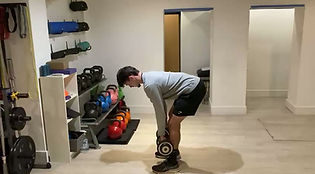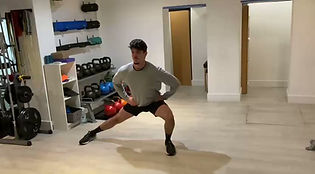
News & Information
INJURY RISK REDUCTION
The health benefits of participating in exercise and the sports we enjoy are well known and include both physical and mental health markers. These benefits far outweigh any risks associated with exercise but there still remains a chance of developing injury and/or pain with participation. The risk of injury is small, with population data suggesting 1.8 injuries per 1000 gym hours and 3.4 injuries per 1000 hours across all sports.
Risk Factors
Injury and/or pain is rarely the result of one simple variable. It will almost always be the result of a combination of factors including:
Training load, frequency and volume
Biomechanics
Strength deficits
Muscle imbalances
Too much or too little range of motion
Your "internal load" - this refers
to how well your body can physiologically cope with the external loads and demands being placed on it. It is affected by things such as sleep, stress, nutrition and recovery.
A distinction worth noting is:
Sports related pain
-
Refers to pain in the absence of acute tissue damage.
-
Examples include patellofemoral (anterior knee “kneecap”) pain and subacromial shoulder pain. These can be the result of sensitised tissues but no injury as such has occurred.
Sports related injury
-
Refers to pain directly associated with tissue damage.
-
If you roll your ankle or sustain a hamstring tear the onset of pain will be immediate and the cause much more obvious.
So, can we prevent pain
and injury?
Not with 100% certainty. Even the fittest and strongest and most well-prepared athletes in the world get injured sometimes.
Can we reduce our risk?
Most definitely!
Current evidence supports strength training as the most effective modality for reducing injury risk. Proprioception training also shows benefit (exercises to improve awareness of your body’s position in space and controlling movement).
The evidence on stretching is conflicting, with a lot of the research suggesting no positive effect on injury rates.
Stretching proved no beneficial effect, whereas multiple exposure programmes, proprioception training, and strength training, in that order, showed a tendency towards increasing effect. Strength training reduced sports injuries to less than one-third.
Although the evidence on stretching is conflicting, it is important to have adequate range of motion to cope with the demands of your sport. In many sports, such as tennis and padel, we move our joints through range dynamically and therefore require strength to control this. Choosing exercises that load your joints and muscles through a large range of motion can be beneficial.
Examples include:





Examples of programs that have been designed based on current best evidence and have been proven to reduce injury rates are the OSTRC and FIFA 11+ prevention programs.
-
The OSTRC (Oslo Sports Trauma and Research Centre) preventative program was designed for sports with an overhead component and/or throwing requirements.

The program focuses on shoulder strength, dynamic movements and reactive drills, all inclusive of using the whole body, not just the shoulder.
-
The FIFA 11+ prevention program was developed by the FIFA Medical Assessment and Research Centre. The program was designed for footballers
The program focuses on dynamic strength of the thigh muscles, core stabilisation, proprioceptive exercises and plyometrics.
Foundation Strength Exercises
In both tennis and padel we have examples of sports that place demands on the whole body. We recommend being proficient at foundation strength exercises, such as:






The addition of proprioception exercises, reactive drills and dynamic movements that are more specific to your sport is recommended. For tennis and paddle this might include:





The selection of exercises above is there to show the variety of options at your disposal. No program needs to include all of them and in fact, performing a handful of well selected exercises 2-3 x week has been shown to offer real benefits.
Those who adhere closely to an injury prevention program halve their risk of injury compared to those who show low adherence.
Research has shown that injury prevention programs reduce the risk of athletic injuries, the effectiveness of these programs tends to be stronger with greater adherence to the intervention
Including targeted exercises to your week will reduce your risk of injury, improve your performance and set you up to participate in your chosen sport for years to come.
The Vitruvian Team.
